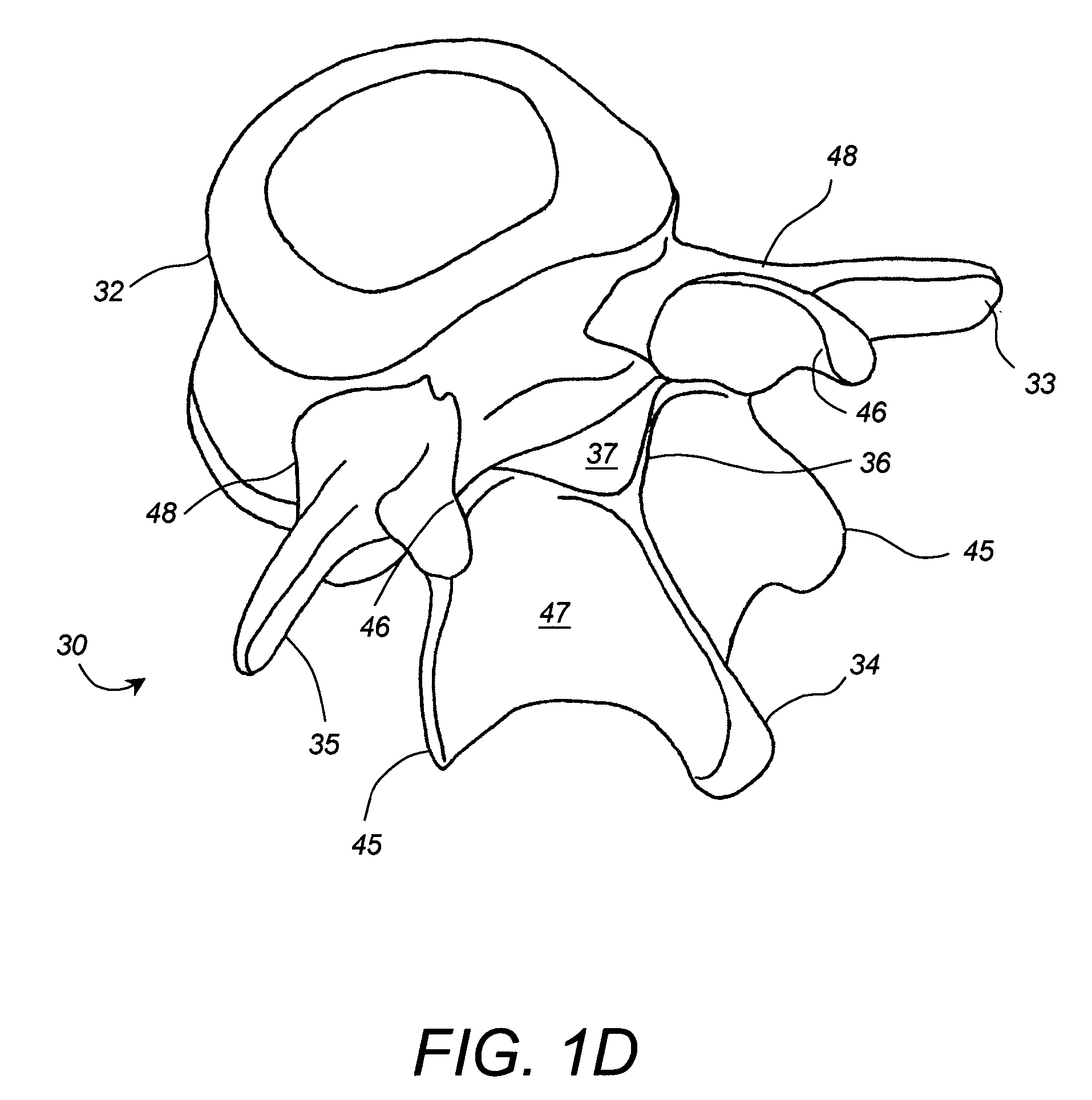Apparatus and method for connecting spinal vertebrae
a spinal vertebrae and appendix technology, applied in the field of appendix and a method for connecting spinal vertebrae, can solve the problems of inability to completely or significantly prevent scarring of dura and nerve roots, and continue to have back and leg pain. , to achieve the effect of stabilizing the spine, compact structure, and retaining spinal flexibility
- Summary
- Abstract
- Description
- Claims
- Application Information
AI Technical Summary
Benefits of technology
Problems solved by technology
Method used
Image
Examples
Embodiment Construction
[0029]Referring to FIG. 2, an implantable spine stabilization device 100 connects vertebra 92 to adjacent vertebra 94 and vertebra 94 to adjacent vertebra 96. The spine stabilization device 100 includes modular components 110, 120, and 130. Modular components 110, 120, and 130 have circular ends 110a and 110b, 120a and 120b, 130a and 130b, respectively, that attach to pedicles 92A, 92B, 94A, 94B, 96A, and 96B of vertebra 92, 94 and 96, respectively, via pedicle screws 111a, 111b, 121a, 121b, 131a, and 131b, respectively. Modular components 110, 120, and 130 replace the resected laminas, pars interarticularis, facets and spinous processes of the vertebra 92, 94, and 96, respectively. Modular component 110 is articulately connected to component 120 along the midline 102 of the device 100 and the corresponding vertebrae 92 and 94, shown in FIG. 6. Similarly modular component 120 is articulately connected to component 130. Additional modular components may be added to extend the spine s...
PUM
| Property | Measurement | Unit |
|---|---|---|
| Length | aaaaa | aaaaa |
| Length | aaaaa | aaaaa |
| Length | aaaaa | aaaaa |
Abstract
Description
Claims
Application Information
 Login to View More
Login to View More - R&D
- Intellectual Property
- Life Sciences
- Materials
- Tech Scout
- Unparalleled Data Quality
- Higher Quality Content
- 60% Fewer Hallucinations
Browse by: Latest US Patents, China's latest patents, Technical Efficacy Thesaurus, Application Domain, Technology Topic, Popular Technical Reports.
© 2025 PatSnap. All rights reserved.Legal|Privacy policy|Modern Slavery Act Transparency Statement|Sitemap|About US| Contact US: help@patsnap.com



